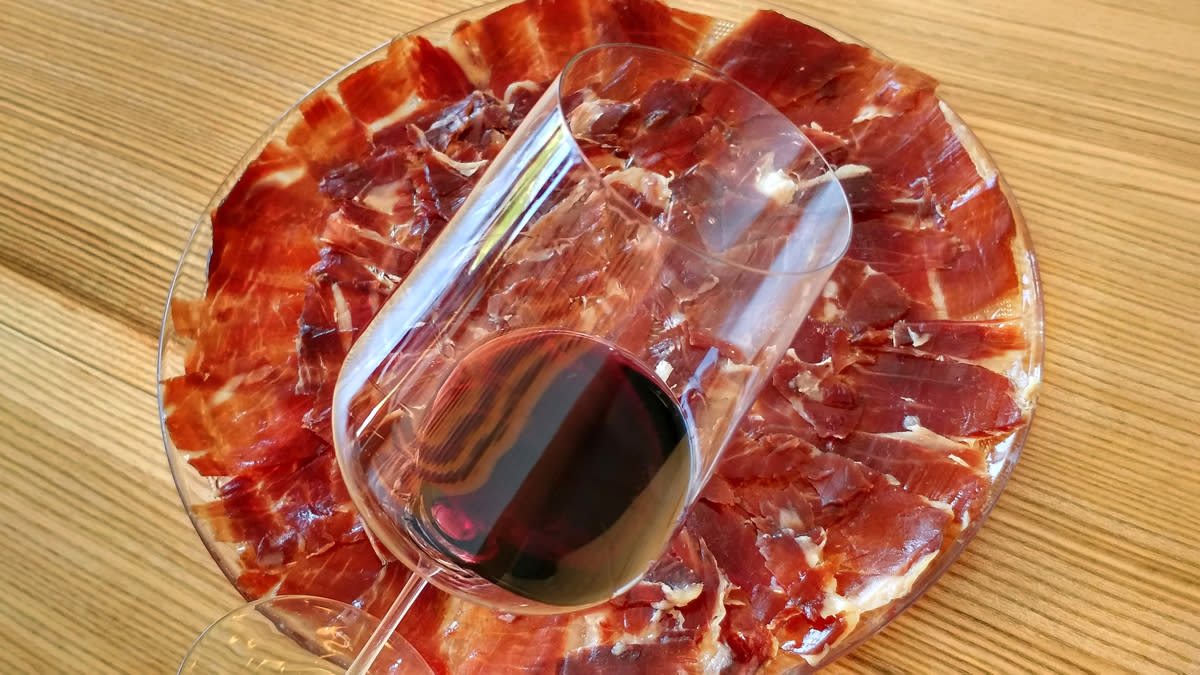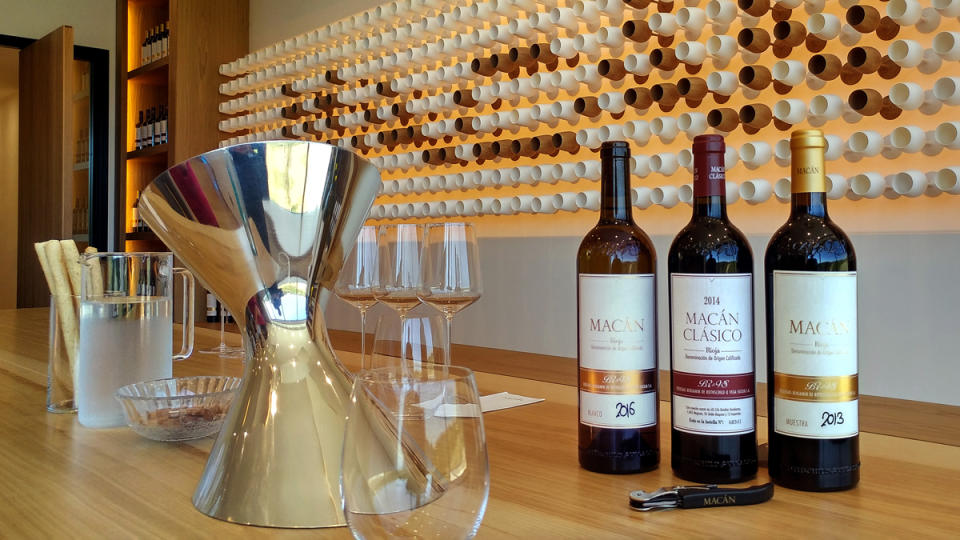Spanish Wines Have Never Been Better. Here’s Why They Deserve a Place in Your Cellar.

In an admittedly wildly unscientific study conducted over the past 25 years, we believe we’ve uncovered something of an enigma—Spain. To elaborate: When asking oenophiles about Spanish wine, we tend to hear mention of just two (yes, two) esteemed producers: Vega Sicilia and Pingus. Now, this pair of outstanding Ribera del Duero wineries are certainly deserving of their collective accolades, but the fact that savvy drinkers can name fewer than a handful of elite winemakers from the fourth-largest (by area) European nation is… just weird.
Home to over 100 wine regions, Spain produces red, white, rosé, and sparkling wines across the entire quality and price spectrum. Just two, Rioja and Priorat, have received the highest designation, D.O.Ca. (which translates to “denomination of qualified origin”), a step above the 68 D.O.-level (“denomination of origin”) regions that are the backbone of Spain’s top-tier wine industry. For the past 20 years, the Iberian nation has also permitted single-estate wines of high quality to be labeled with the special vino de pago (V.P.) designation, which indicates an exclusive area limited to the confines of a wine estate. With stringent requirements regarding permitted grape varieties, aging time, alcohol levels, and even the number of kilograms of grapes per hectare, the country is seriously committed to protecting the quality and reputation of its vinous output.
More from Robb Report
Fewer Restaurants Are Hiring Sommeliers Thanks to the Pandemic
This Oregon Winery Turned Its Smoke-Tainted Wine Into Whiskey
Veuve Clicquot's Former Cellar Master Has Released a Stellar Champagne From His New Domaine
Rules, regulations, and initials aside, it is, of course, only the character and quality of the juice in the bottle that matter. And Spanish wine is good. As much as we believe Burgundy to be the sole region in the world that produces equally superlative reds and whites, as a country, Spain is right up there, offering a wide range from red grapes such as Tempranillo, Garnacha, Mencía, and Monastrell and whites such as Albariño, Verdejo, Viura, and Godello. Having had a home in Spain for nearly two decades and traveled to all of the country’s major wine regions, we cannot fathom why the wine is not more popular in the U.S., particularly among serious wine lovers. For collectors of red, search for bottles such as Torres Reserva Real, Mauro Terreus, Valduero Una Cepa Premium, Muga Aro, Vatan Arena, and Sierra Cantabria Amancio. For whites, try Campo Eliseo Harmonía, Resalte Albillo Mayor, or Granbazán Limousin Albariño.

That said, it is easy to understand why Spanish wine doesn’t have a reputation equal to French or Italian. The saying “If it grows together, it goes together” is especially applicable to pairing food with wine, so producers from countries with popular culinary styles have an easier and more obvious route to gaining traction in export markets. America has a long history of emigrants from Italy, and with that comes a tradition of Italian restaurants. Over time, these have evolved from “red sauce” joints to fine-dining establishments serving elevated regional Italian cuisine. An awareness and enjoyment of the country’s wine has expanded alongside this culinary evolution, transitioning us from bottles of fizzy, semisweet Lambrusco and straw-wrapped jugs of Chianti to Barolo, Amarone, Brunello, and Super Tuscans.
Likewise, America’s relationship with wine from France has enjoyed favored status from the time of the Founding Fathers. More recently, U.S. soldiers stationed in France during World War II returned home with a hankering for Gallic cuisine. French restaurants became the epitome of elegant dining, even if they were tarted-up bistros serving onion soup and steak frites, and Julia Child taught an entire generation how to master the art of French cooking. From the postwar boom through the Judgment of Paris in 1976, Americans enjoyed a love affair with French wine that continues to this day.
Meanwhile, dictatorial rule until Francisco Franco’s death in 1975 did little to bolster Spain’s image as a tourism destination. Historically, Spaniards have preferred to immigrate to South America, Central America, and the Caribbean over moving to the U.S., so America has lacked a specifically Spanish influence on cuisine and culture. It’s only in the past 20 years that Spanish food has been popularized across this country, especially in cities, via tapas bars. While casual evenings standing at high tables, dining on small plates paired with wine by the glass is our idea of a great time, it doesn’t advance the concept of fine dining accompanied by fine wine. In fact, the entire experience reinforces the idea of Spanish food as enjoyable but ultimately inconsequential.
One challenge is that, with the exception of high-end offerings from Spanish chefs such as José Andrés and Dani García, diners in the U.S. have limited opportunities to become exposed to great bottles alongside an elevated meal. Spain is home to some of the best restaurants in the world, certainly in Barcelona and particularly in Donostia-San Sebastián, but something gets lost in translation when outposts move to our side of the Atlantic.

Spain is one of the top three wine producers on the planet, behind France and Italy, but you wouldn’t know it from its lack of representation in many wine shops and eateries. Look at the selections from France, Italy, and California and compare them to the paltry Spanish choices. Part of the blame lies with thirsty natives: Just shy of 60 percent of Spanish wine is drunk domestically. But we’re simply not doing our part. While 16.4 percent of Spanish wine is exported to the U.K., Americans consume only 10.4 percent, yet our population is five times greater. The most widely drunk Spanish wine in the U.S. is Cava; despite its “cheap and cheerful” reputation, Cava is on the up. The number of single-vineyard and vintage Cavas released is increasing, especially since the D.O. updated its rules in 2021—with Rioja trailing closely behind.
But that status quo might be changing. According to an October 2023 report issued by ICEX, the Spanish Institute for Foreign Trade, Spain ranks eighth for volume of wine imported into the U.S. but fourth for value. It’s focusing its exports “on higher-priced wines, in line with the trend observed in the country in recent years of declining demand for ‘cheap’ wine… and increasing interest in premium wine,” the report states.
For many years, industry insiders have hailed Spain’s excellent quality-to-price ratio, and while that remains true, prices are now rising as winemakers focus on single-vineyard bottlings, micro-vinification, and small-batch artisanal wines. Yet many still represent far better value than their counterparts from more widely known European neighbors—which makes them our tip for a more prominent place in your glasses, and collections, as a result.
Best of Robb Report
Why a Heritage Turkey Is the Best Thanksgiving Bird—and How to Get One
The 10 Best Wines to Pair With Steak, From Cabernet to Malbec
Sign up for Robb Report's Newsletter. For the latest news, follow us on Facebook, Twitter, and Instagram.

